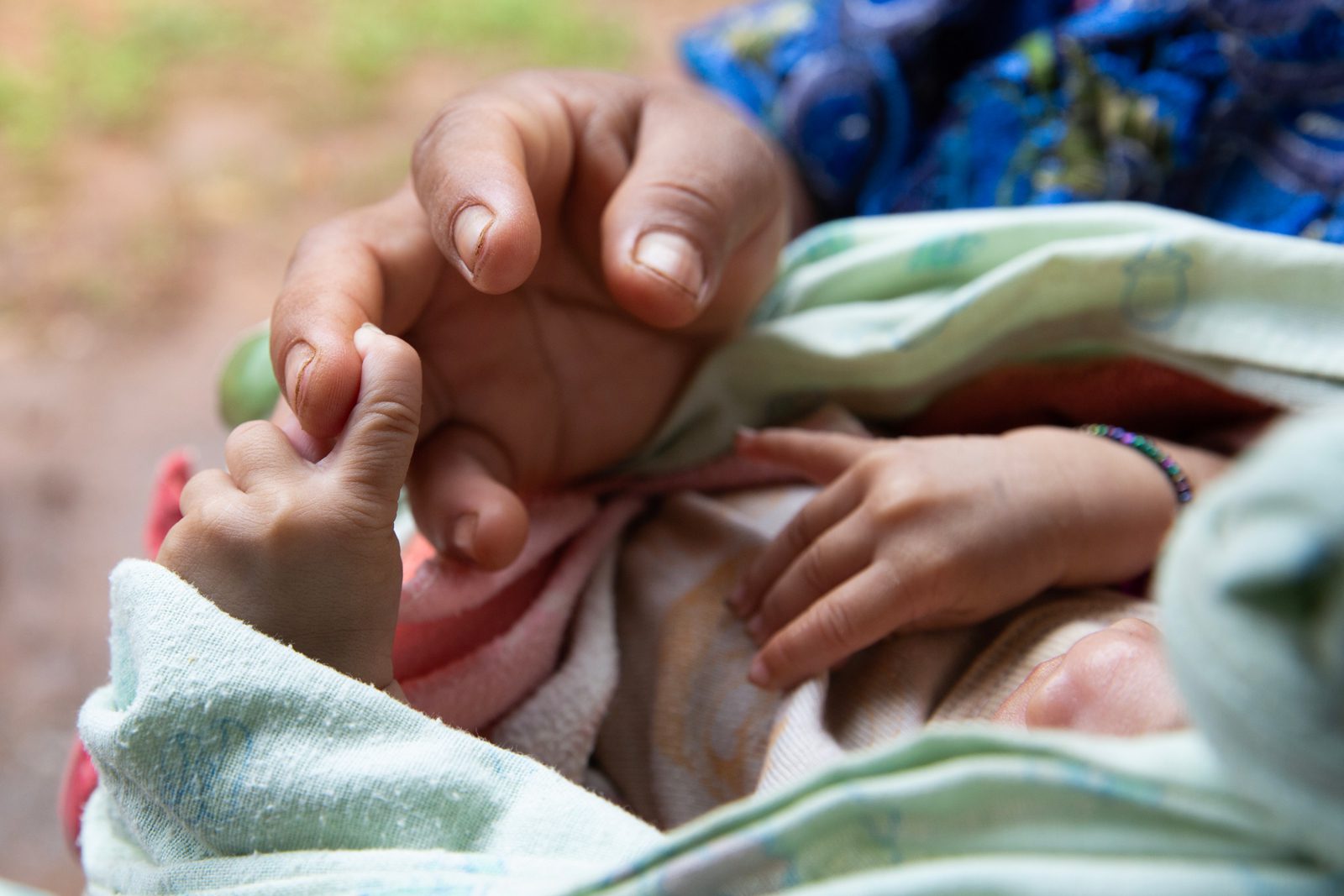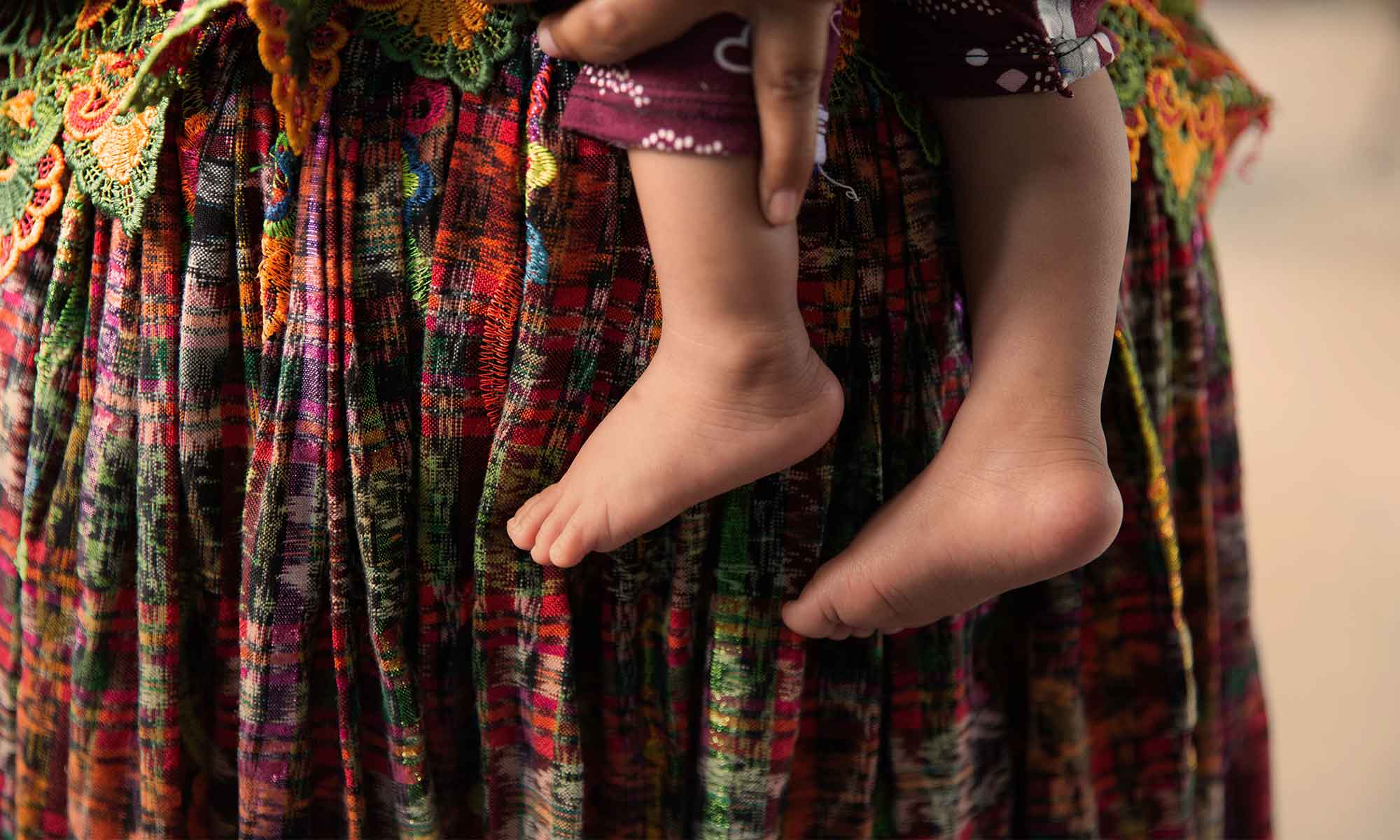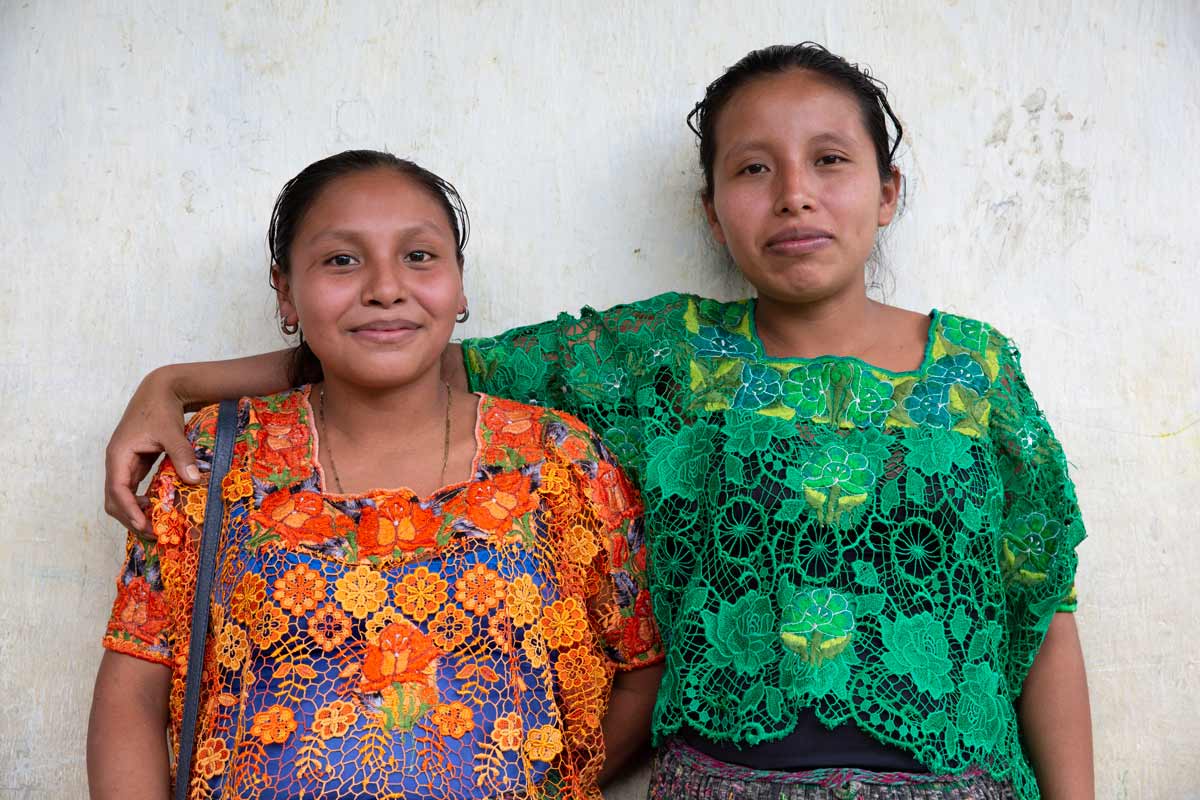STORY
Carried with Love: Babywearing Around the World
by Kari Brayman
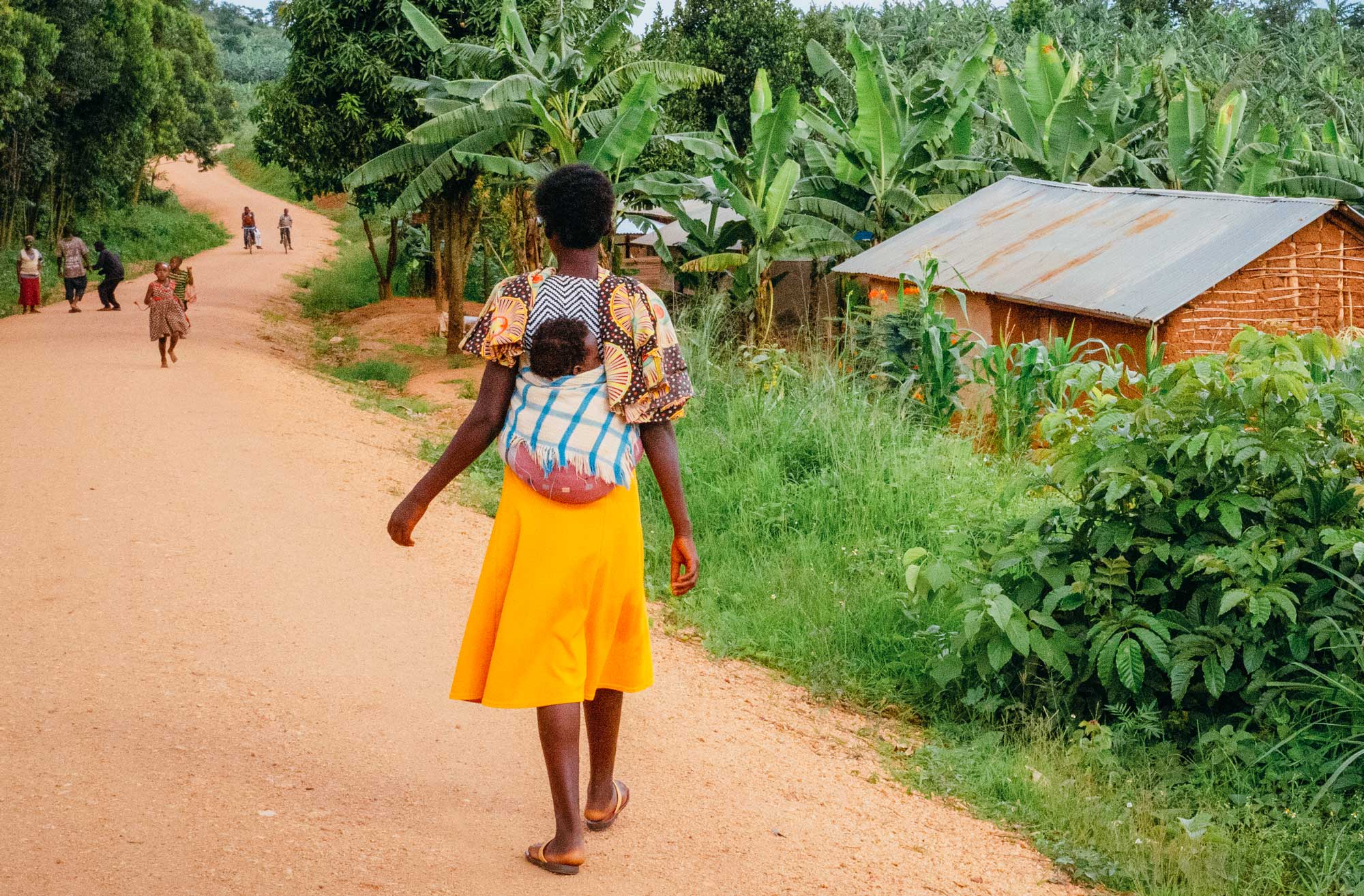
For centuries, mothers have found clever ways to carry their babies while going about their daily tasks, keeping them safe and close. Take a look at some examples of babywearing that we’ve spotted around the world.

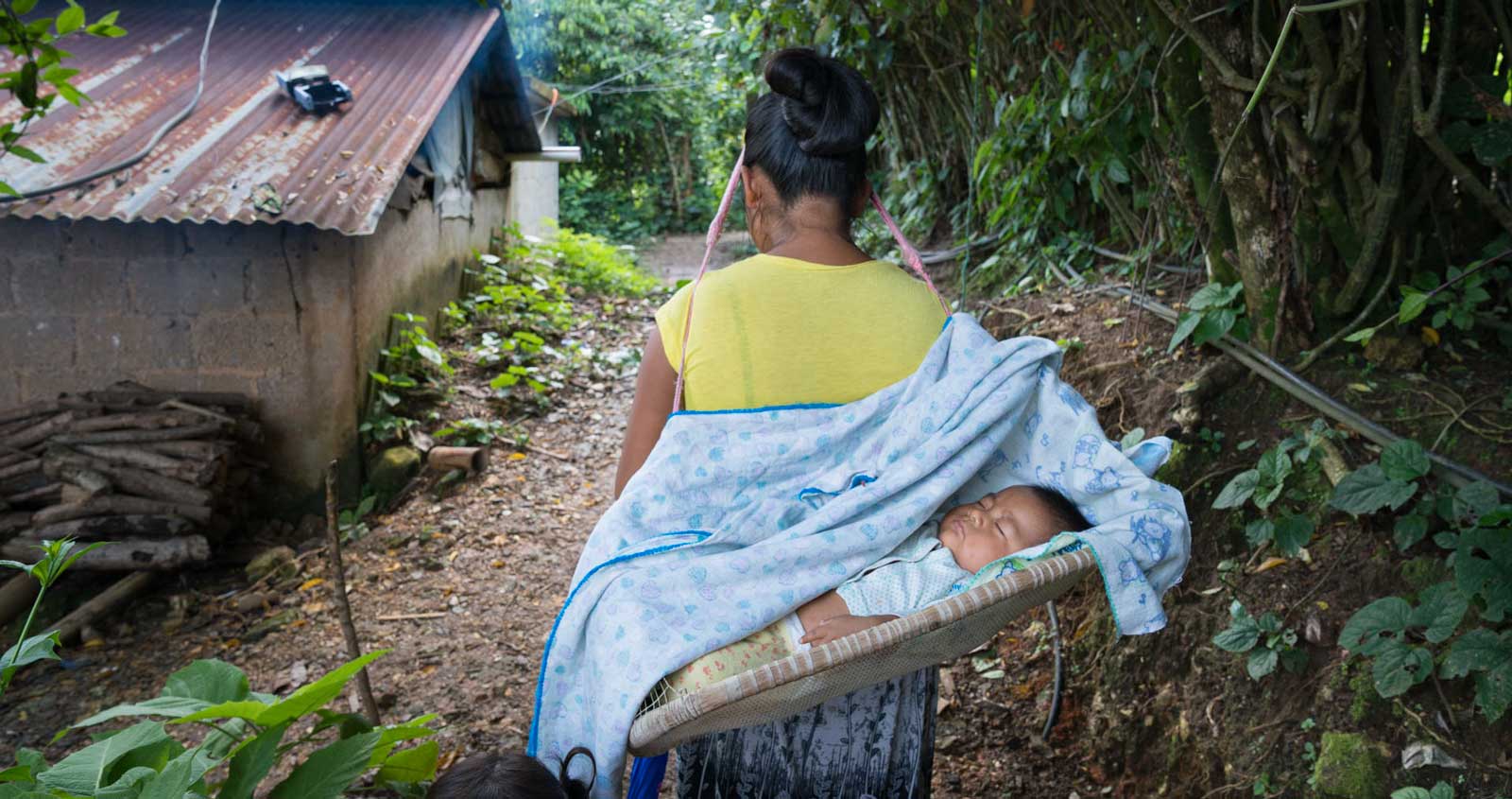
Roberta carries her baby in a huacal
In Mexico, some Nahua mothers carry their babies in a basket called a huacal. This woven cradle is suspended from the mother’s head and hangs down her back. Said to have originated during the Aztec Empire, some still use the huacal; however, traditional woven shawls, called rebozos, have become more common. The colorful fabric is wrapped into a sling and worn close to mom’s head, providing a great vantage point for babies!
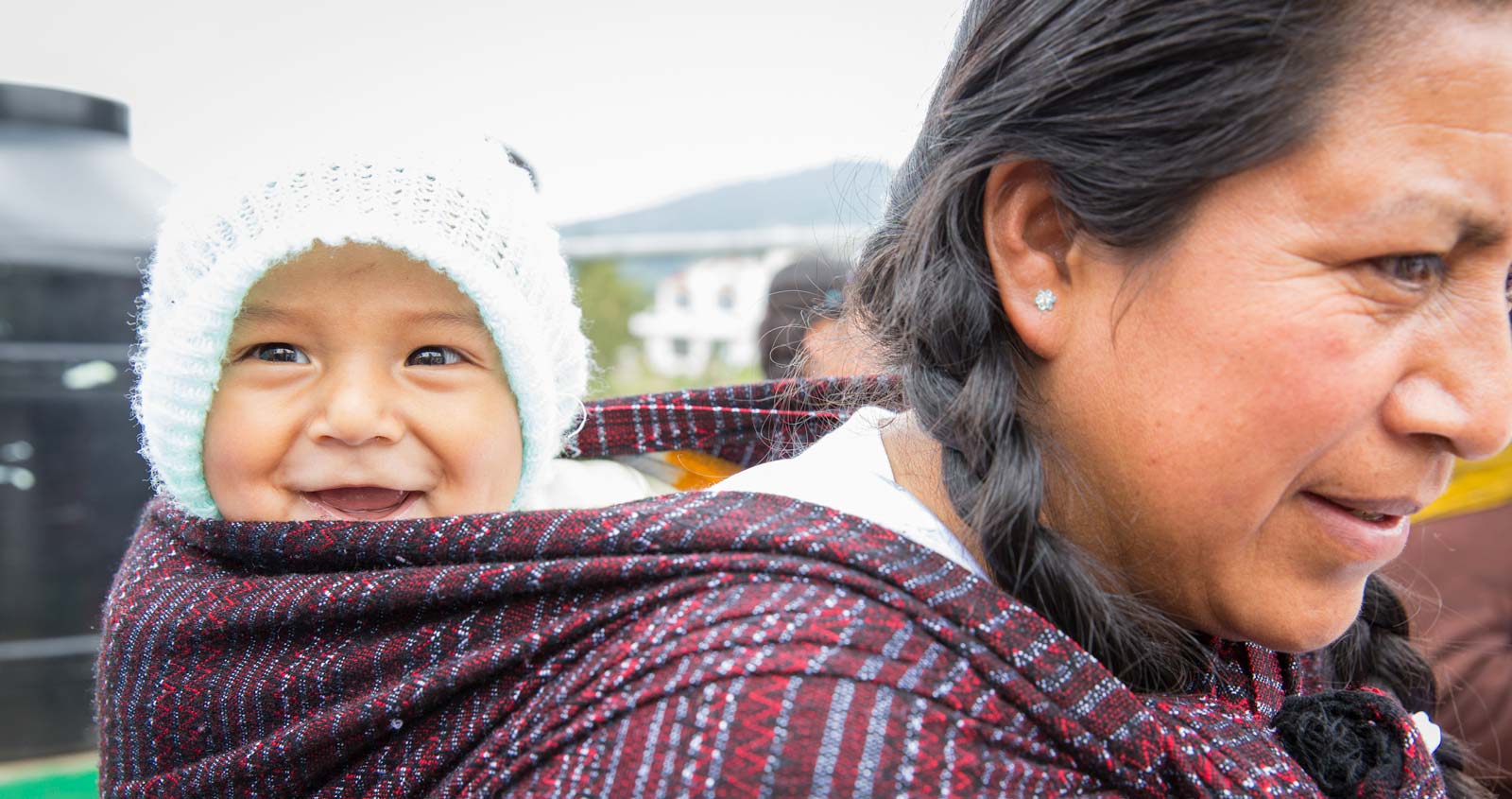
Mom, Dominga, carries Eduardo, who is clearly enjoying the ride!

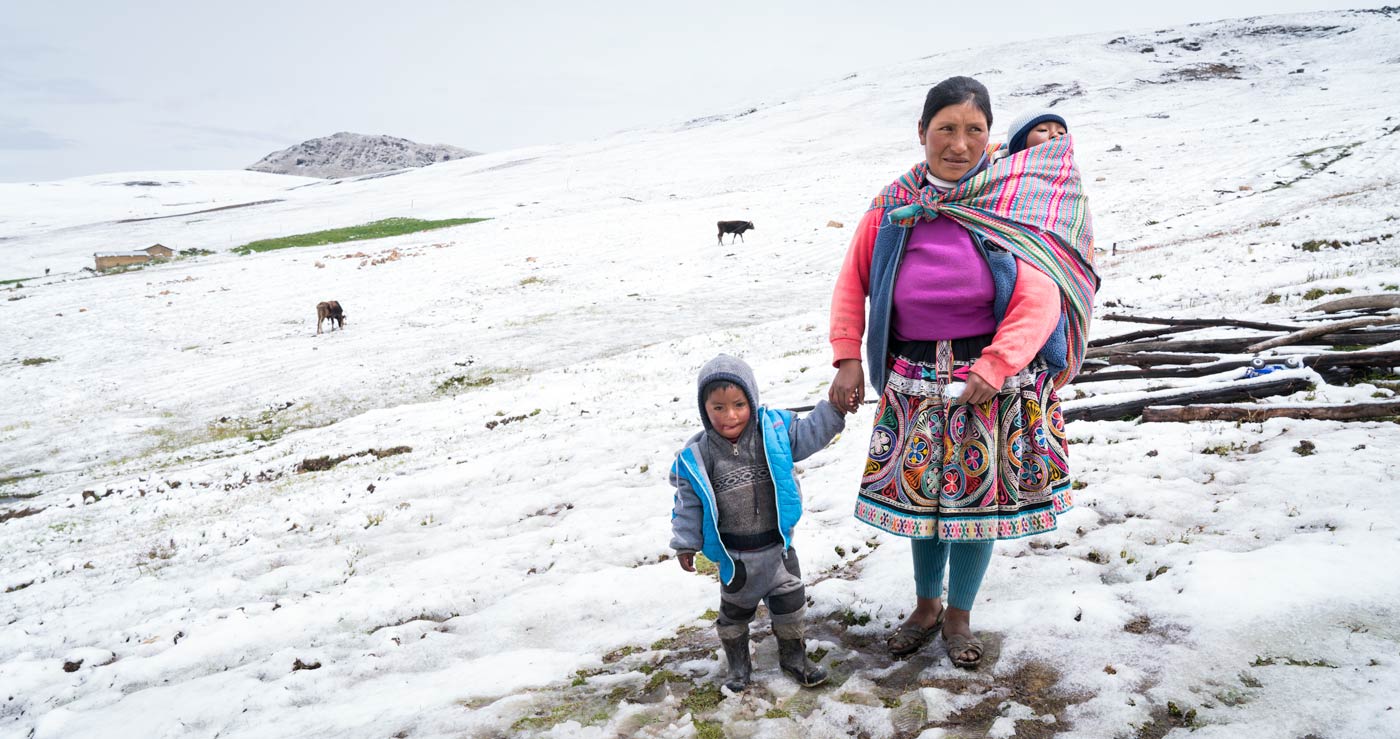
Oscar gets a comfy ride in his mother’s manta.
Similar to the slings worn in Mexico, some Peruvian mothers often wear mantas. This multi-purpose traditional cloth is wrapped around the baby and tied across the mother’s shoulders. Mantas are also utilized for transporting various items such as firewood, vegetables, and freshly harvested herbs. With their hands free, Andean mothers conduct all manner of day-to-day tasks—from traversing up the rocky mountainsides to cooking and harvesting potatoes in the fields—all with their babies snuggly on their backs.

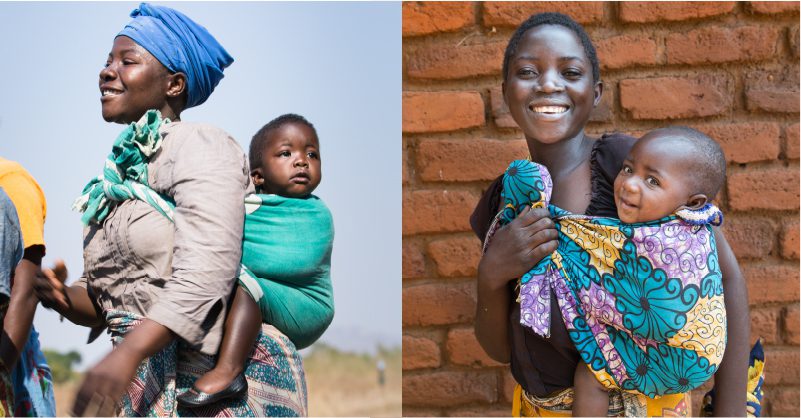
L-R: Sauda catches a ride with mom in Malawi, Eneless carries her little one
Babywearing practices vary throughout Africa, each region applying its unique method or terminology. In East Africa, for example, slings called kangas are commonly tied over one shoulder and under the arm. This versatile and colorful fabric can also be worn as a dress, skirt, or headpiece. The Malawian government has endorsed babywearing or Kangaroo mother care (KMC) for decades in an effort to improve newborn health.1

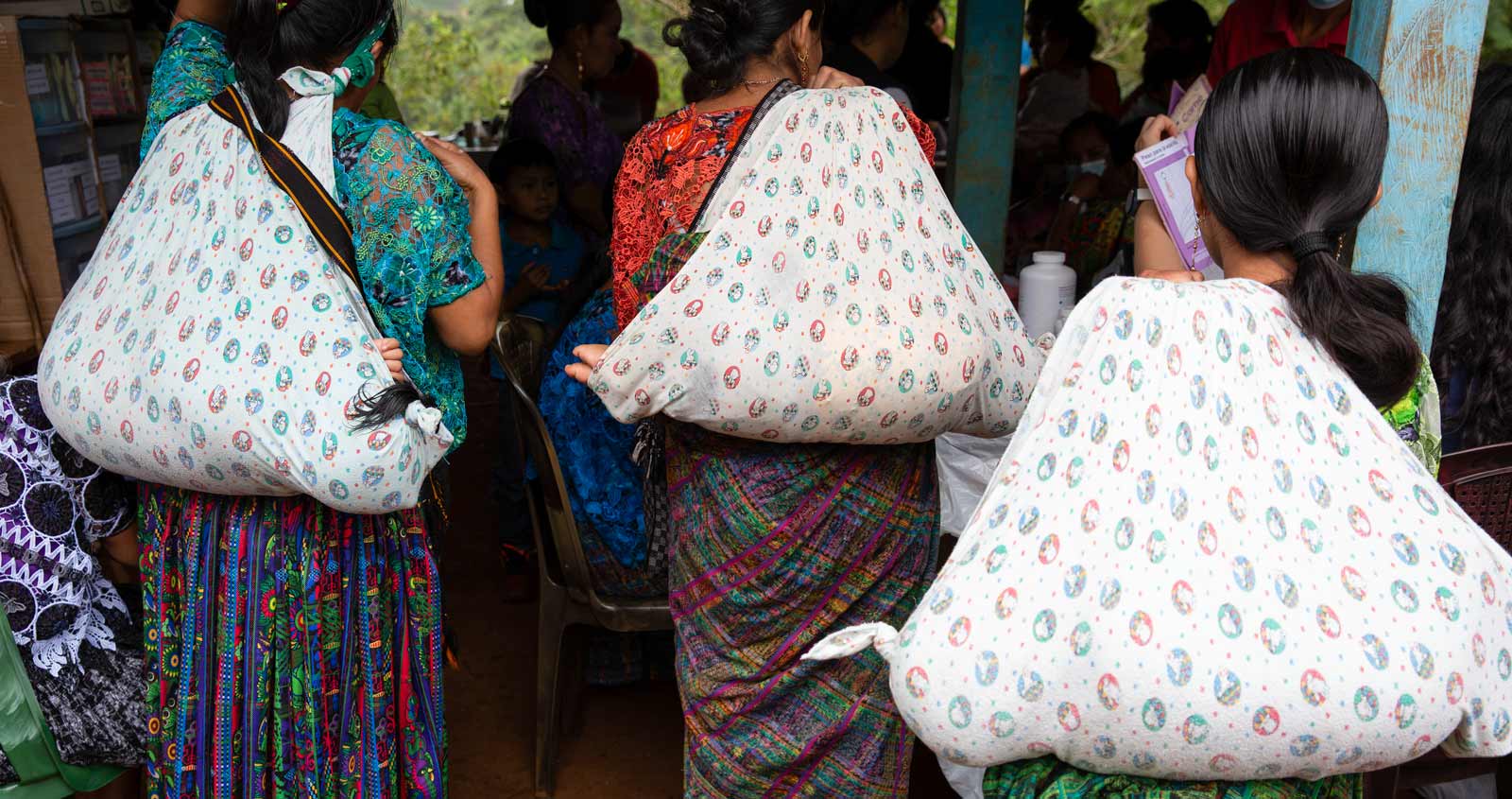
Three Guatemalan mothers stand with children slung in baby blankets over their shoulders
Epitomizing the adage, “necessity is the mother of invention,” sometimes moms ingeniously use whatever materials they have available to create baby carriers. In Guatemala, for instance, some Mayan children are nestled into the blankets their mothers received after childbirth. These blankets are knotted and slung over one shoulder, the sling reminiscent of a stork carrying a newborn baby.

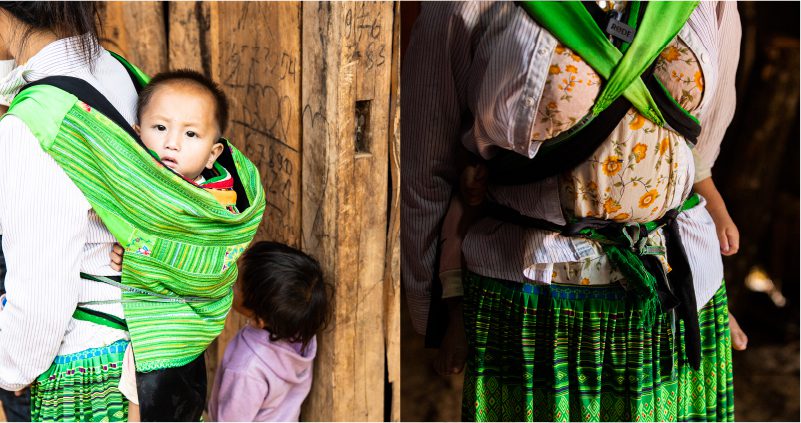
L-R: A baby wrap crisscrossed on the front of a Vietnamese mom, with baby on the back
In northern Vietnam, moms wear colorful baby carriers on their backs, similar to a traditional Chinese-influenced Meh Dai (meaning “straps to carry on back”)2. Others wear a similar style on the front of their bodies. Either way, Vietnamese baby carriers in the northern mountains are usually crafted from a variety of colorful fabrics with embroidered and batik patterns in the tradition of the Hmong people. They are sometimes adorned with decorative tassels or fringes. Legend has it that this helps keep babies safe from wandering spirits by allowing them to blend in with their surroundings, like flowers or branches.

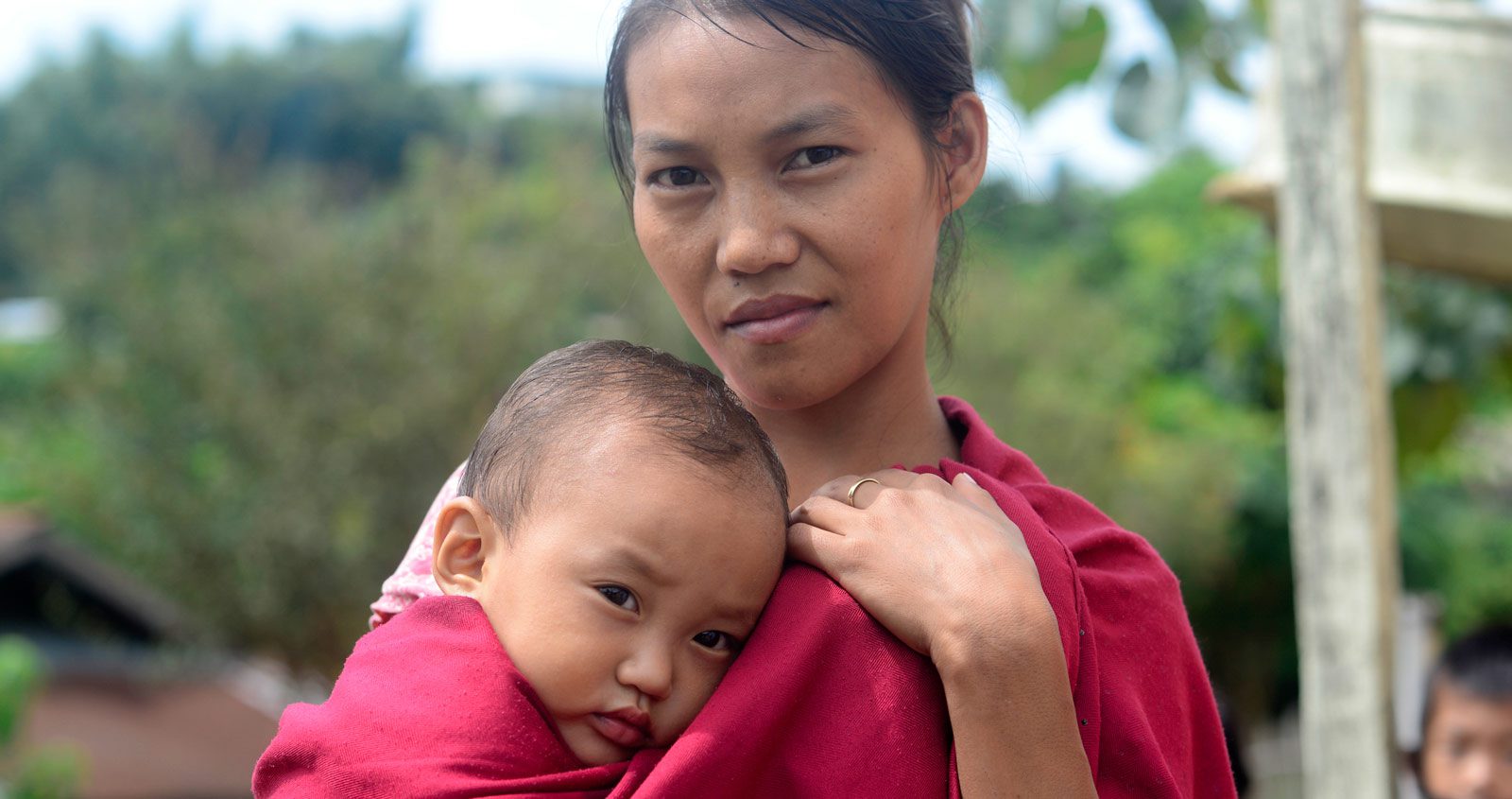
Nojmei is carried by his mom in Nagaland, India
Carrying babies in slings made from saris is a deep-rooted tradition in India, historically used by farming women and laborers. Indian mothers have used a variety of creative methods for carrying their young, even full baskets that are attached to their backs, supported by a thick strap across the sternum. In some more urban areas, the introduction of strollers and car seats has limited babywearing, but many Indigenous communities maintain their babywearing traditions.

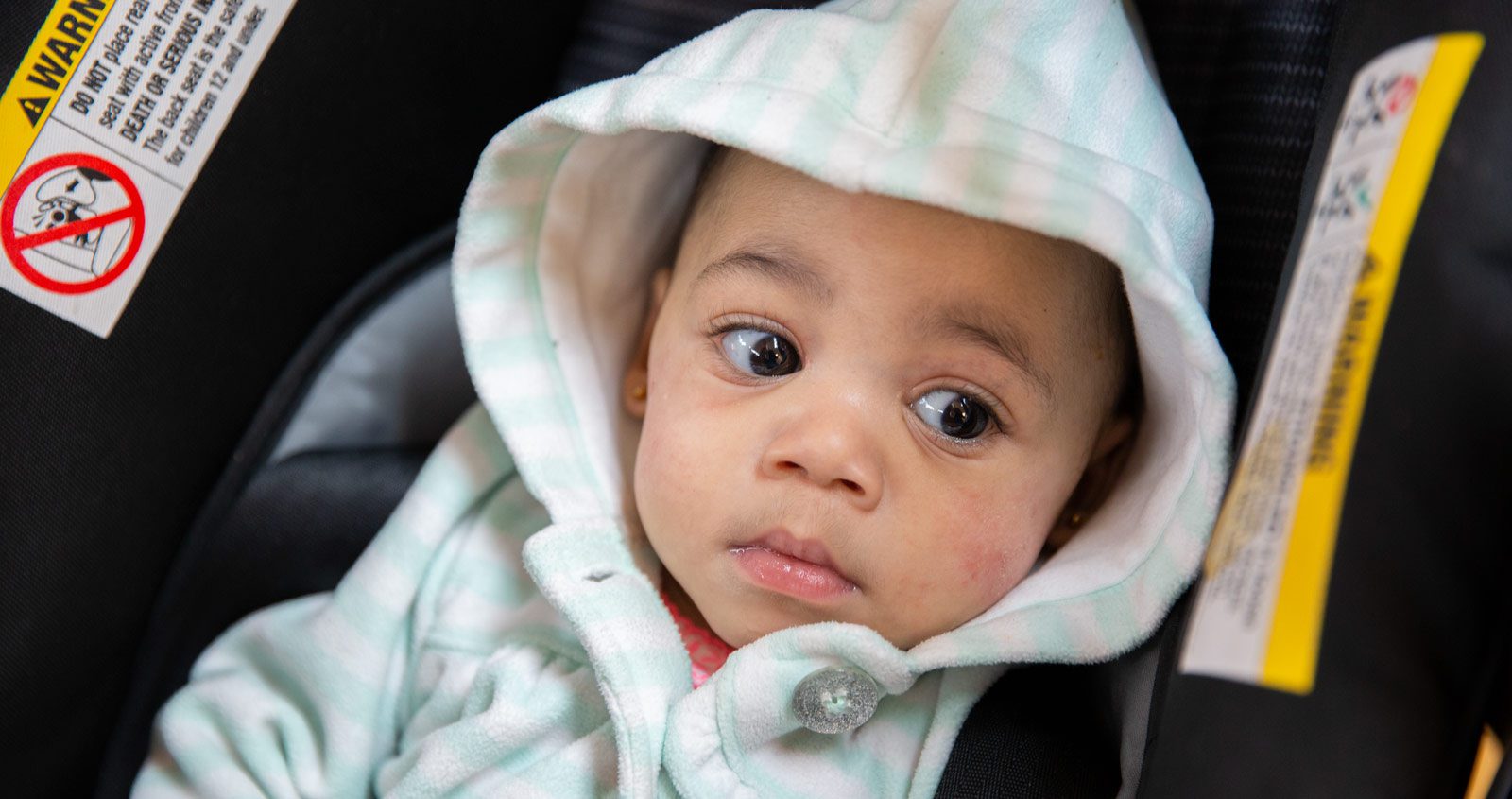
Joy, tucked into her car seat
In the United States, baby transportation varies widely. While strollers and car seats dominate the market, babywearing alternatives are enjoying a surge in popularity. Wraps, slings, and backpacks come in a variety of textiles, patterns, and designs, with manufacturers and craftsfolk providing limitless choices for moms who want a closer physical connection with their growing babes.
The practice of babywearing transcends borders and cultures, highlighting the universal desire to hold our babies close. With limitless options, this shared tradition invites moms everywhere to embrace their precious little ones and those very first moments that they take in the world from the safety of their mothers’ backs (or fronts!). Carry on!
1 https://academic.oup.com/inthealth/advance-article/doi/10.1093/inthealth/ihad114/7517480
2 https://www.hopeandplum.co/blogs/hope-and-plum-baby-carriers-blog/the-story-of-traditional-meh-dai

